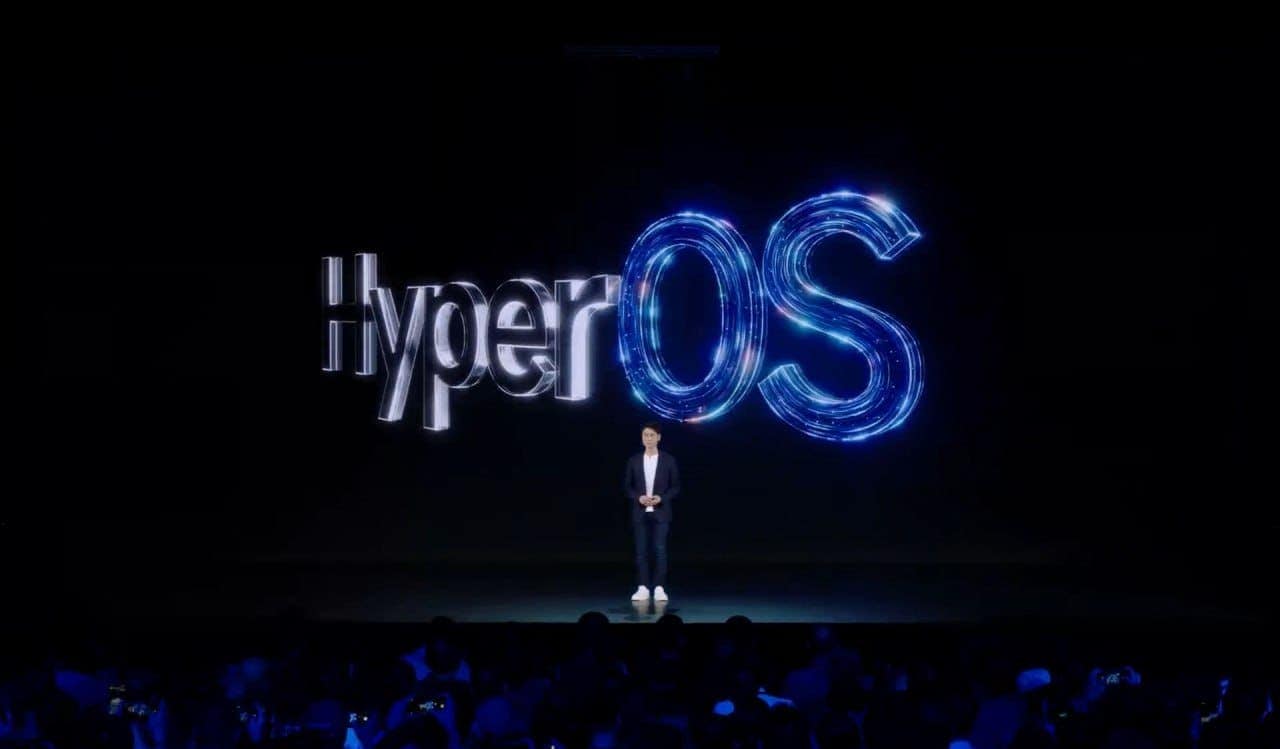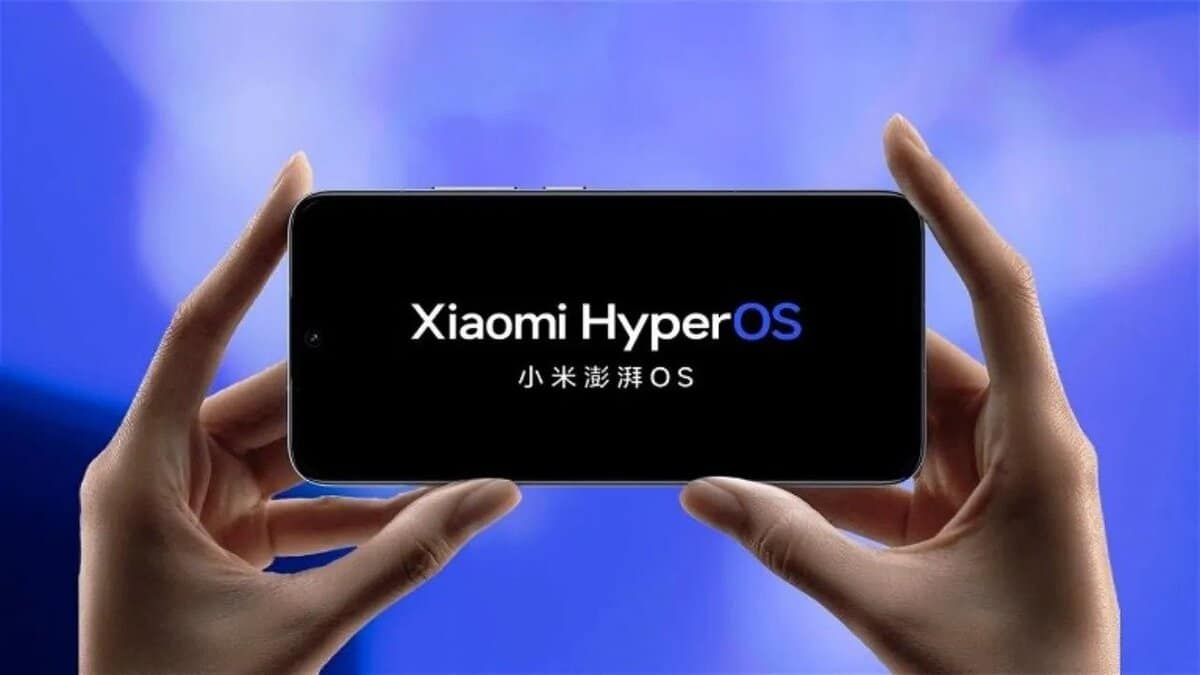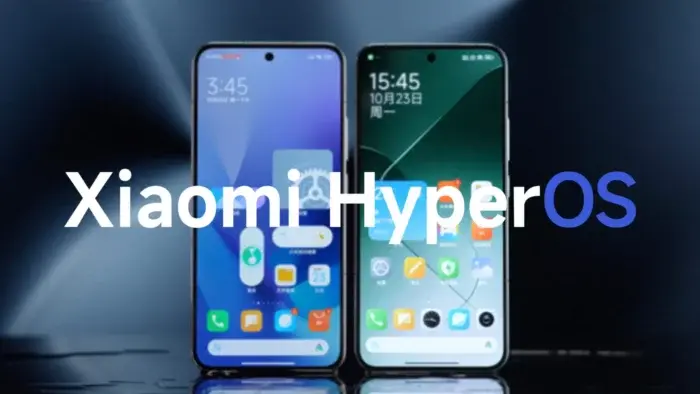In the bustling realm of mobile technology, a seismic shift is brewing. Enter HyperOS, the much-anticipated operating system from Chinese tech giant, Xiaomi. Cloaked in secrecy until its grand unveiling, HyperOS ignites whispers of revolution, promising an experience that transcends the ubiquitous reign of Android. But can Xiaomi’s audacious venture truly break the mold and reshape the mobile landscape?
HyperOS: Beyond Android – Can Xiaomi’s New OS Break the Mold?

Beyond Mobile Walls: Weaving the “Human x Car x Home” Tapestry
HyperOS’s ambition isn’t confined to mere smartphone domination. It paints a breathtaking vision of a connected ecosystem – the “Human x Car x Home” tapestry. Your phone, no longer a solitary device, becomes the portal to a holistic smart experience. Imagine seamlessly transitioning music from your phone to your car as you drive, or remotely adjusting your home temperature with a tap on your screen. This interconnected future, where technology bends to your every whim, is the symphony HyperOS aims to orchestrate.
Android’s Familiar Embrace, Tweaked and Amplified
While Android forms the bedrock of HyperOS, Xiaomi emphasizes a symphony of optimizations designed to push the boundaries of user experience. They pledge to “efficiently maximize hardware capabilities,” a siren song for users weary of sluggish performance. But optimization goes beyond raw muscle.
HyperOS tackles the elusive yet crucial element of fluidity. Xiaomi boasts a 17% reduction in average programming latency for critical tasks, and a jaw-dropping 72% drop in maximum latency. These figures translate to buttery-smooth animations, apps that launch in a blink, and an overall responsiveness that could leave Android feeling sluggish in comparison.
Delving Deeper: Kernel Refinement and Performance Precision
The often-neglected kernel, the beating heart of the operating system, receives a welcome overhaul. Message delivery delays are slashed by 17%, putting an end to the frustration of notifications arriving eons late. Task switching receives a turbo boost, enabling seamless multitasking for those juggling deadlines and social media escapades.
Storage management, a perennial thorn in the side of smartphone users, gets a much-needed makeover. HyperOS ensures consistent performance even on budget-friendly devices with limited storage, a blessing for frugal tech enthusiasts. OTA updates shrink by a staggering 79%, saving precious data and reducing download times. And to top it off, the entire system footprint is noticeably smaller compared to MIUI, liberating over 3GB of precious storage for users to fill with memories, not system bloat.
Aesthetics with Substance: Nature’s Embrace and Personalization
HyperOS isn’t merely a technical powerhouse; it’s a feast for the eyes as well. The interface leans towards a modern, nature-inspired aesthetic, infused with subtle animations and a consistent MiSans font. The customizable lock screen, reminiscent of Android 14, allows users to express their individuality. Security and privacy haven’t been neglected either. Hardware-level solutions and robust privacy options for photos, facial recognition, and more ensure your digital life remains safely under your control.

Promises to Reality: Can HyperOS Deliver?
Technical prowess and dazzling promises only paint half the picture. The true test of HyperOS lies in its ability to translate these ambitions into a tangible user experience that surpasses Android. Can Xiaomi deliver on its claims of unparalleled smoothness, optimized performance, and seamless connectivity? Time will be the ultimate judge, but the anticipation is palpable.
Breaking the Android Hegemony: Challenges and Competition
Xiaomi isn’t the first to challenge Android’s dominance. Huawei’s HarmonyOS paved the way, demonstrating the viability of alternative mobile operating systems. However, the road ahead for HyperOS is rife with challenges. Convincing users to migrate from the familiar embrace of Android is no small feat. App compatibility, developer adoption, and ecosystem building will be crucial hurdles to overcome.
Competition lurks around every corner. Established players like Google and Apple, along with up-and-coming contenders like Ubuntu Touch, will fiercely defend their turf. Standing out in this crowded landscape requires more than just technical prowess; it demands a compelling user experience that resonates with a critical mass of consumers.
A Glimpse into the Future: Possibilities and Potential Ramifications
If Xiaomi can deliver on its promises, HyperOS could redefine the mobile landscape. Imagine a world where your phone seamlessly interacts with your car, adjusting climate control and playing your favorite music as you drive. Smart homes transform into interactive havens, responding to your every whim with a tap or voice command. The possibilities are endless, and HyperOS stands at the precipice of ushering in this connected future.
While HyperOS might not spell the immediate demise of Android, its arrival injects a much-needed dose of competition and innovation into the mobile OS space. The potential ramifications are far-reaching.
-
Android Evolution: Android itself could benefit from the pressure exerted by HyperOS. Google might be forced to innovate at a faster pace, improving performance, optimizing features, and further strengthening its ecosystem to retain its user base.
-
App Ecosystem Diversification: A thriving HyperOS could lead to a more diverse app ecosystem, providing users with greater choice and potentially fostering independent developers who might feel overshadowed by the dominance of Google Play.
-
Consumer Empowerment: Increased competition ultimately empowers consumers by offering them more options and potentially driving down prices as manufacturers vie for market share.
HyperOS: A Beacon of Innovation or a Fleeting Flash?
Only time will tell whether HyperOS becomes a game-changer or fades into tech history as a footnote. But one thing is certain: its arrival marks a pivotal moment in the evolution of mobile operating systems. By challenging the established paradigm and pushing the boundaries of user experience, HyperOS has opened a door to a future where innovation reigns supreme. Whether you’re an Android purist, a tech enthusiast, or simply someone who craves a seamless and connected experience, HyperOS is a development worth watching with bated breath.
But the potential impact goes beyond these direct consequences. HyperOS’s “Human x Car x Home” vision raises intriguing questions about the future of technology and our interactions with it:
-
Privacy Concerns: Can a seamlessly connected ecosystem operate without compromising user privacy? How will HyperOS address data security and user control in an environment where devices share information constantly?
-
Digital Divide: Will everyone have access to the benefits of a connected future? Can HyperOS overcome affordability and accessibility barriers to create a truly inclusive technology experience?
-
The Human Role: In a world where technology anticipates our needs, where does human agency fit in? Will HyperOS empower us or simply create a dependence on its intelligence?
HyperOS is more than just an operating system; it’s a harbinger of a future where technology is inextricably woven into the fabric of our lives. Its success will hinge on its ability to not only deliver on its technical promises but also navigate the complex ethical and social implications of a hyperconnected world.
Whether HyperOS becomes a footnote in technology history or a catalyst for a new era of interconnected living remains to be seen. But one thing is certain: its arrival sparks a critical conversation about the future of technology and our role within it. As we watch this ambitious venture unfold, it’s our responsibility to ask the right questions and ensure that the connected future we create is one that serves humanity, not the other way around.






Only a tiny percentage of professional hackers have the specialized hacking abilities and knowledge needed to recover lost BTC, Facebook hacking and Catching a cheating partner via a Whatsapp link. Finding a reliable hacker like HACKERWEREWOLF is preferable.
A first class hacking hacking team that can aid in the recovery of your misplaced cryptocurrency, lost Facebook account and hack your partner Whatsapp. A hacking organization that can aid in the recovery of your misplaced cryptocurrency, lost Facebook account and to help you gain access to your cheating partner Whatsapp. I lost $298k in BTC to bitcoin mining, and HACKERWEREWOLF was able to retrieve it. In my darkest hour, when my Bitcoin was lost and hope seemed but a distant memory, HACKERWEREWOLF and their extraordinary team emerged as the catalysts of change.
Their exceptional knowledge and relentless determination propelled me towards recovery, restoring my faith in the crypto world, Facebook/Whatsapp hacking.
If you find yourself lost in the depths of lost Bitcoin, facebook and Whatsapp hacking, let HACKERWEREWOLF’s team guide you towards the light of redemption.
Facebook page:Hackerwerewolf
Email:hackerwerewolf637@gmail.com
Whatsapp:+4917617861530